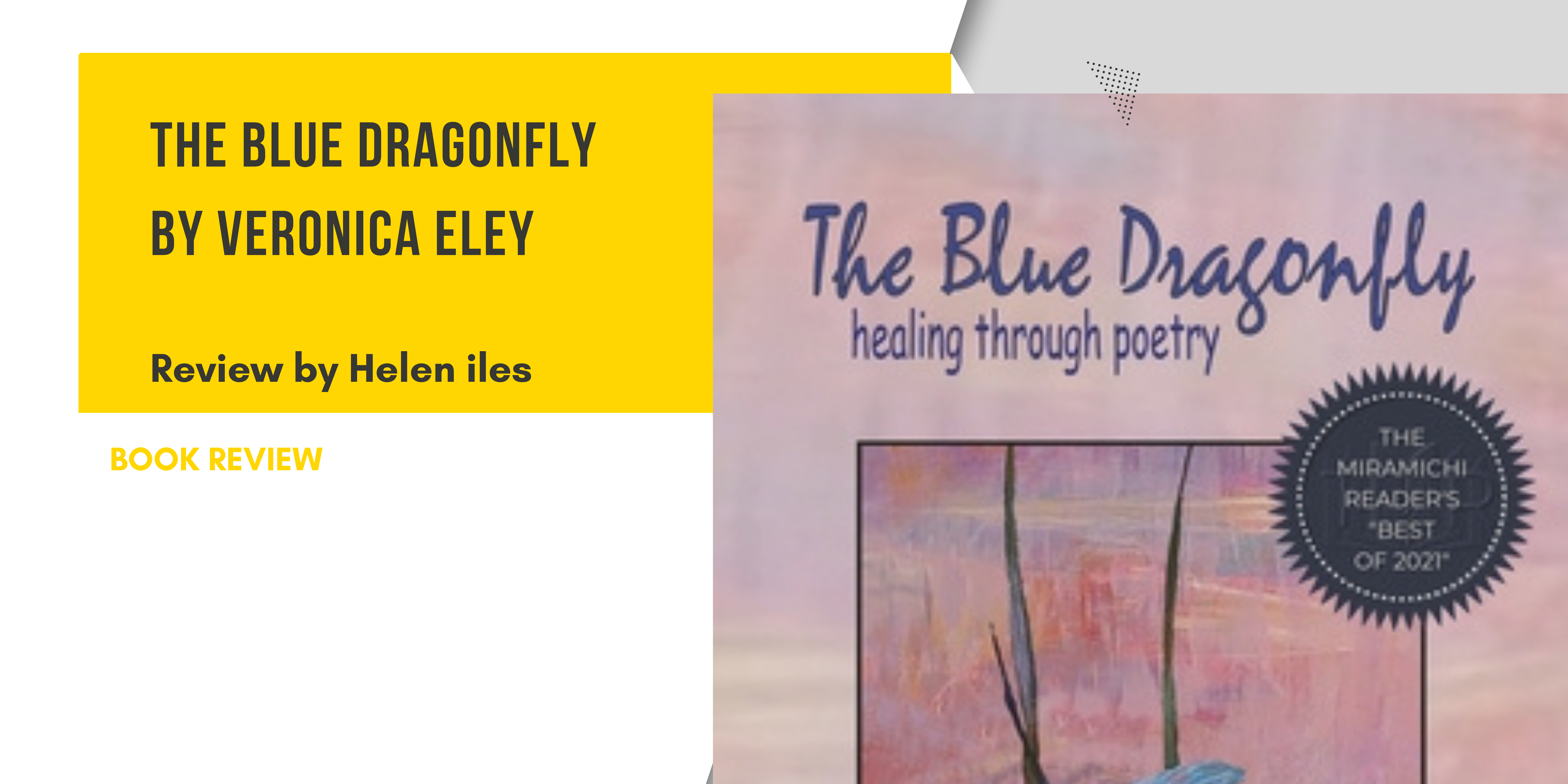The Blue Dragonfly by Veronica Eley - Book Review
 The Blue Dragonfly by Veronica Eley
The Blue Dragonfly by Veronica Eley
Hidden Brook Press 2021
ISBN : 9781738095902
“inside out
outside in
the feelings have become
statues in the garden
monuments to a crime”
The Blue Dragonfly is a courageous collection of poetry charting the deep psychological waters of living with childhood trauma. Veronica Eley’s raw, direct voice challenges.
Emerging from the psychiatrist’s padded office; from sanctioned gangster hallways of a mental hospital and from daily disorderly documenting of family life, the poet’s words unravel tortured experience - obliquely exact and savagely beautiful. It’s a wild ride which may require a trigger warning. If you’re new to the idea that writing can be therapeutic, this collection will convince you of the power of storytelling to explore, excavate, catalogue and contain the patchwork nature of human life. In Foreward, editor Roger Langen, who is also Eley’s husband, explains how the layout of the book reflects the stages of healing trauma: “injury and illness in 1 Secret Monsters; intervention (experienced like a miracle) in 2 The Bodhisattva; forgiveness and transcendence in 3 Mother.” (p.xv)
In her Author’s Note, Eley acknowledges the role of witness, ‘who authenticates that feelings and events actually took place and are not just the ramblings of an unstable woman in a world not grounded in reality.” (p.xvii) As readers, we are very much invited to be witnesses. Sometimes, a few words reveal a whole episode:
‘the walls narrowed
the floor sank
my heart, my heart/
an unnatural negotiation
was about to occur
a newborn child
removed from her mother” (p.5)
As therapy process begins, the writer lets us know we are in for a bumpy ride:
“I reconstruct
the past
putting on
protective lenses
to avoid
sharp
flying objects” (p.7)
Dark humour makes a wry entrance, making unpalatable truth more digestible.
“the words were in the cookie dough/
in the oven
they screamed and screamed
until they were cooked and eaten” (p.11)
Hapless parents are observed as :
“practicing warfare
on the small
undeveloped
territory of child” (p.14)
An intervention is initiated, but it’s not over yet…the poet discovers “torn wings” (p 47); “black holes” (p 48) and then, as sensibility returns, “flapping wings” (p 51). Resurfacing overwhelms and results in hospitalisation, where the writer is revealed as:
“a tent without a pole/ a treasure box without a key/ a person without a centre” (p.74)

There is a tunnel deep inside me (p.81) feels like a turning point - the poet understanding that her young self was not resourced to make decisions. Pulsing with pain, she determines to take the reins of her life. In a ball of wool (p.83), measured detachment accompanies the self-awareness that facilitates change. The poet is now 50 years old. Her heart opens, only to be crushed closed again when rejection brings the trauma rushing back. In the crash that follows, peeping through the haze of medication is a more holistic picture of self. Writer and reader together hope the cracks where light can enter will not be completely sealed shut. Sure enough, in Stories:
“the sun shines in
the miracle
of morning light
after the
darkness
of the night” (P.98)
In the silence of healing space, the poet begins to hear herself and others speak:
“The stories
bring
us close
together
my heart
my heart” (p.102)
She encounters a “guardian angel” with “mauve-soft” feathered wings, who provides a “safe place” for her to “lie down”. At this point, the reader is rewarded for witnessing the difficult journey. Our protagonist - our heroine - is coming home to herself. Our relief in this denouement is as palpable as in any well-rounded narrative. We want her to be ok.
In Mother, the poet has gathered enough tools to be able to “put on/ her binoculars” (p.115) and look back over her life. We learn how the softness associated with mauve came from her mother’s love of this colour and with this memory, a softness gathers towards her past. (p.127)
In Healing, the poet toggles between dark and light; fear and sorrow - master of her own mind. An appreciation for the natural world is mingled with an appreciation for family - son, husband, father - while moon, stars and everyday wonders show how:
“the mosaic of emotions
can be a work of art
a heart beating
pulsating with life” (p.145)
Finally, in Home, the blue dragonfly of the title appears in the form of a person:
“blue, blue/ quiet and deep” (p151)
Metamorphosis is complete. Words like blood, knife, pain are displaced by soaring, soothing and contemplating. A sense of peace pervades, which the reader is invited to imbibe. The “respite” (p.154) is not only for the poet, but also for the reader, her witness.
Review by Helen iles
Related Posts
By accepting you will be accessing a service provided by a third-party external to https://www.lapidus.org.uk/
